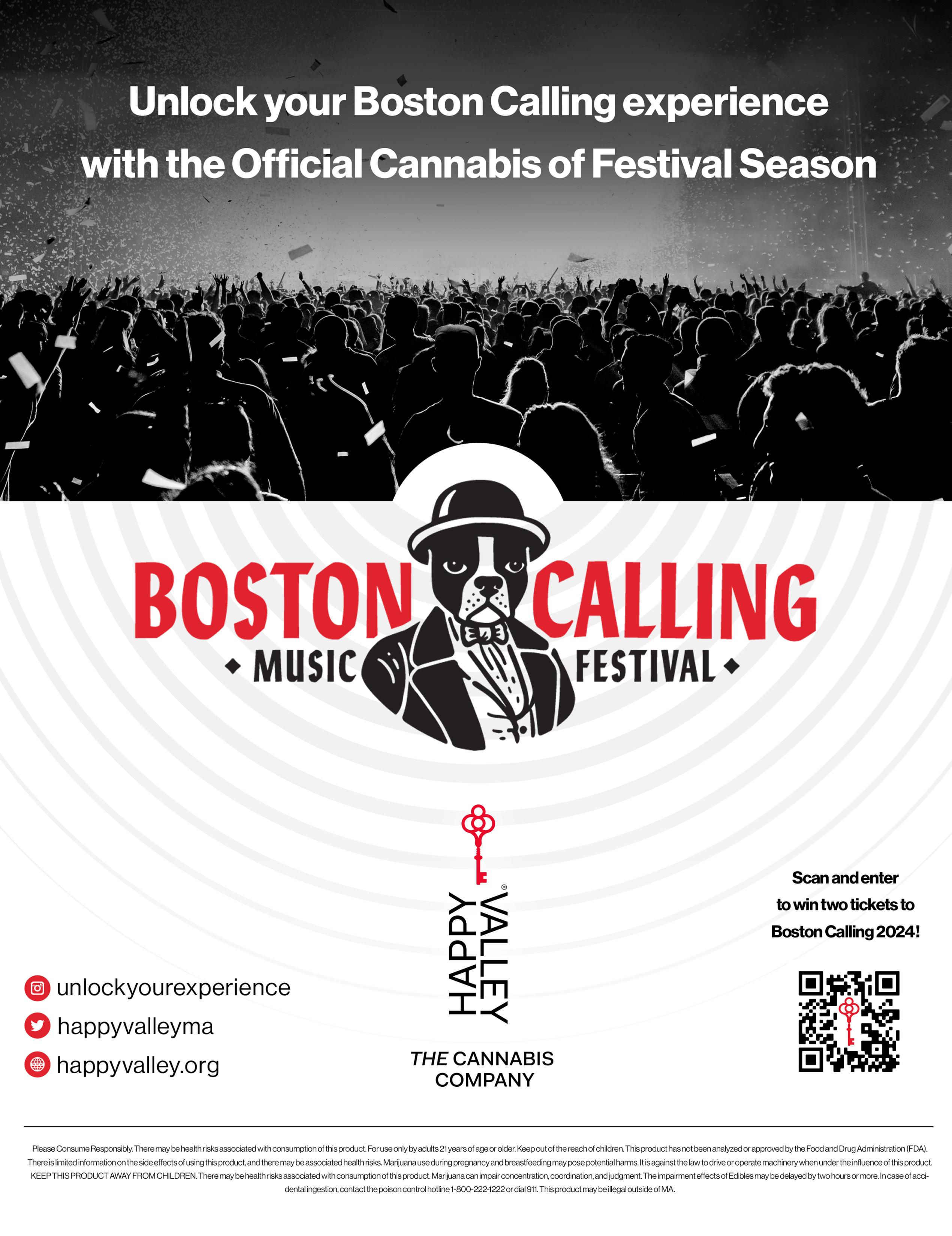SOLDIERING ON How cannabis ghts PTSD

SCIENCE AND PSYCHEDELICS
What we know—and don’t
MICHIGAN
Muha Meds is ready for its second act.
CANNABIS AND DIET
Feeding body and soul
REDEFINING WELLNESS

SOLDIERING ON How cannabis ghts PTSD

SCIENCE AND PSYCHEDELICS
What we know—and don’t
MICHIGAN
Muha Meds is ready for its second act.
CANNABIS AND DIET
Feeding body and soul
REDEFINING WELLNESS










For all the struggles we face in and out of the workplace, Happy can help.
Frictionless Mental Health ensures that emotional support is not just available, but delivered proactively, around-the-clock, one-on-one and in groups at the times people need it the most.


Unlimited Proactive Outreach
24/7 Availability
Community Workshops
100% Confidential
Happy makes creating a more supportive culture as easy as one genuine conversation at a time.
For more information: info@frictionlessmentalhealth.com



sensimediagroup @sensimagazine @sensimag

FEATURES
22 Take a Little Trip With Me
Not since the 1960s have hallucinogens been so popular and widely discussed.
28 Sound Effects
Sound bathing offers a new, old way to meditate and explore a deeper introspection.
40 Michigan Dreamin’
After a rocky introduction into the Michigan market, West Coast-based Muha Meds is ready to make waves.
DEPARTMENTS
9 FOUNDER’S NOTE
10 THE BUZZ
News, tips, and tidbits to keep you in the loop
TRAVELING WITH CANNABIS Know the regulations to avoid legal problems.
IN BLOOM UFC’s Marlon “Chito” Vera enters the infused beverages ring with Maison Bloom
A MILESTONE IN CANNABIS
CONSUMPTION LOUNGES
First-ever regulated cannabis cocktail lounge opens in Las Vegas
UNDERCOVER OKLAHOMA New law introduces secret shoppers in the medicinal cannabis industry
FRESH TAKE New laws and regulations for Colorado cannabis
WELCOME BACK TO MICHIGAN Apotheculture Club announces spring event in Detroit
A NEW CHAPTER Packwoods enters Massachusetts market
16 THE LIFE
Contributing to your health and happiness
A SOLDIER’S STORY Major Jim McClendon leads the charge for change.
32 THE SCENE
Hot happenings and hip hangouts around town
LET FOOD BE THY
MEDICINE Good bacteria in your gut put you on the path to greater health.
50 THE END


EXECUTIVE
Ron Kolb Founder ron@sensimag.com
Jade Kolb COO jade@sensimag.com
Carolyn Scott Communications Director carol@sensimag.com
Chelsea Moynihan VP of Sales chelsea@sensimag.com
PUBLISHING
Tyler Tarr Market Director, Colorado
Jamie Cooper Market Director, Michigan
Richard Guerra Market Director, Massachusetts
Jake Boynton Market Director, Massachusetts
Ron Kolb Interim Market Director, Oklahoma
Matthew Solan Executive Editor
Matthew.Solan@sensimag.com
Mike DiPaola Copy Editor
Mike.Dipaola@sensimag.com
Claire Barber National Contributor
Jen Bernstein National Contributor
Debbie Hall National Contributor
Elizabeth McWilliams National Contributor
Eugenia Merkoulov National Contributor
Gretchen Van-Monette National Contributor
DESIGN
Jamie Ezra Mark Creative Director jamie@emagency.com
Rheya Tanner Art Director
Wendy Mak Designer
Josh Clark Designer
Andrew Ontko Designer
PRODUCTION
Neil Willis
Production Director & Client Support Specialist

the cannabis conversation and reduce cannabis stigma. Our hope was to produce something aesthetically beautiful, but with lifestyle and educational content that any soccer mom or grandad could learn from and identify with. Being the first to do something comes with challenges, but after nine years (and COVID) we are on an evolutionary path upward!
Now we have expanded our mission to embrace and elevate the conversation around psychedelics and plant-based medicine in the context of all things wellness. Bringing ancient wisdom to a modern audience is not an easy task, but we have an incredible team working to make it happen. At our disposal is a deep wealth of knowledge along with powerful stories of lived experience – incidentally supported by science. People are hurting but solutions are abundant, and we intend to spread the word through both our print magazine and our ever-expanding digital platforms.
Like Sensi Media Group to infuse your newsfeed with more of our great cannabis lifestyle content.
Sensimag.com is perpetually evolving to match our mission. While we have finite space in the print magazine, we have a limitless canvas in the digital world. So, we are excited to produce our quarterly magazine in multiple states in America, and to give our readers even more content on our website, no matter where they live.
We are sincerely excited to provide Sensi readers with tools they can use for mental, relational, and physical healing and betterment. Whether you read for yourself or someone you love, we are honored to come along with you on your wellness journey.
Follow @sensimag for need-to-know news and views from Sensi headquarters.

Pretty things, pretty places, pretty awesome people: nd it all on @sensimagazine
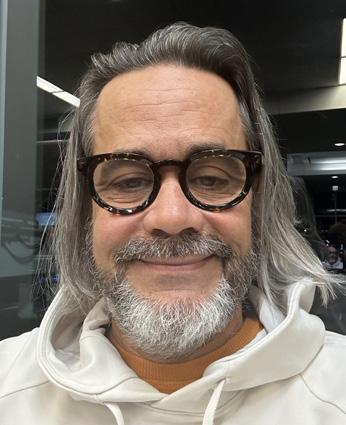
Bringing ancient wisdom to a modern audience is not an easy task, but we have an incredible team working to make it happen.


Know the regulations to avoid legal problems.
With legalized medicinal cannabis in 38 states and legal recreational cannabis in 24 states, it is still important to know and understand the law about transporting cannabis to a destination in a different state.
The Federal Aviation Administration is responsible for regu-
lating flights, and it is essential to note that specific cannabis and cannabis-infused products, including some cannabidiol (CBD) oil, are illegal under federal law. However, products that contain no more than 0.3% THC on a dry-weight basis (which is federally defined as hemp) or
those that the U.S. Food and Drug Administration approved can be transported on a plane according to TSA regulations. It is also important to check state laws regarding using or possessing cannabis products in public places or driving across state lines with them.
UFC’s Marlon “Chito” Vera enters the infused beverages ring with Maison Bloom
Marlon “Chito” Vera, Ultimate Fighting Champion bantamweight fighter and entrepreneur, has joined San Francisco-based Maison Bloom as owner-partner.
Maison Bloom, which emerged during the 2020 lockdown, offers a variety of all-natural hemp-based THC flower-powered seltzers, including Vera’s favorite: Strawberry Provençal + Lemongrass.
Vera’s new role will include the title of Head of Health + Wellness. Vera’s addition is part of the brand’s continuing national expansion efforts, which include full-scale direct-to-consumer e-commerce and broader distribution across upscale convenience stores, epicurean bodegas, and an increasing network of award-winning on-premises hospitality partners. For more information, visit livemaisonbloom.com.
BY THE NUMBERS25 STATES that have legalized adult-use cannabis.
39 STATES that have legalized medicinal cannabis
First-ever regulated cannabis cocktail lounge opens in Las Vegas


53%

U.S. residents who live in a state with adult-use cannabis
75%
U.S. residents who live in a state with legalized medicinal or recreational cannabis
70%
U.S. adults who favor legalizing cannabis.
In 2024, 24 states had legalized recreational cannabis, creating a demand for consumption lounges. As Sensi reported in 2023, Nevada showed movement toward becoming one of the rst states to o er smokeand-chill spaces.
Smoke and Mirrors, located in the Thrive Cannabis Marketplace near the Las Vegas Strip, is the rst lounge in Nevada to be approved by the Nevada Cannabis Compliance Board. It opened to the public on February 23 at 4:20 p.m., with Clark County Commissioner Tick Segerblom making its rst sale.
The lounge o ers a unique social atmosphere and a wide range of premium, expertly crafted mocktails infused with various cannabis strains.
Tourists can visit Nevada and purchase cannabis—but it is illegal to consume in a hotel room, parking garage, car, or really anywhere else except a private residence. But with the opening of the consumption lounge, residents and visitors now have a place to imbibe.
www.smokeandmirrorslv.com.
SOURCE: Carnevale Associates LLC; Gallup
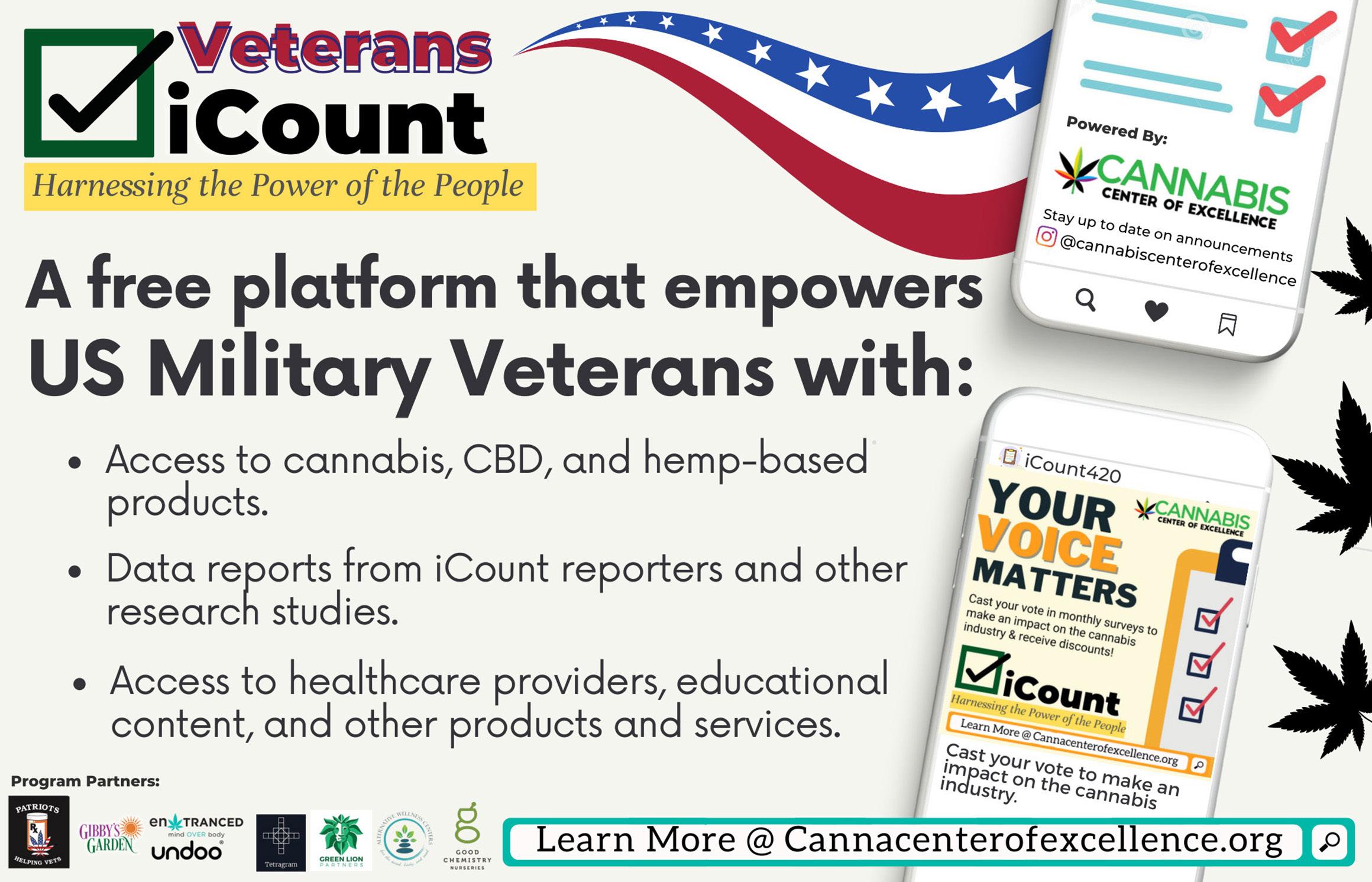

New law introduces secret shoppers in the medicinal cannabis industry
The legalization of cannabis has brought about many positive changes, one of which is quality control. To that end, the Oklahoma Medical Marijuana Authority will be sending secret shoppers into at least 50 dispensaries annually to buy cannabis products and test them in labs. This new law (HB3971) was enacted on Jan. 2, 2024.
State representative Josh West, who sponsored the bill, said it aimed to keep Oklahomans safer by ensuring that cannabis products sold in dispensaries meet speci c quality standards. West also said that he has heard business owners express their concerns about competing with those who sell on the black market, and the law is a step towards ensuring everyone is held to the same standards.
New laws and regulations for Colorado cannabis Colorado, one of the first states to legalize adult-use cannabis, has introduced a new regulation for cannabis products. All packages of cannabis products must include a "use by" date label that indicates the freshness and quality of the product. Most use-by dates on retail packaging will have a duration of nine months, unless a grower or manufacturer can show a later date is justified. This is not an expiration date per se, but an indication of optimal product freshness.
Also, the Marijuana Enforcement Division will have more authority to seize and destroy regulated cannabis products considered to be a health and safety risk. Another new regulation allows hospitality businesses to sell more cannabis products per transaction. There are two cannabis hospitality businesses in Denver and a few more elsewhere in the state, but this industry is expected to grow.

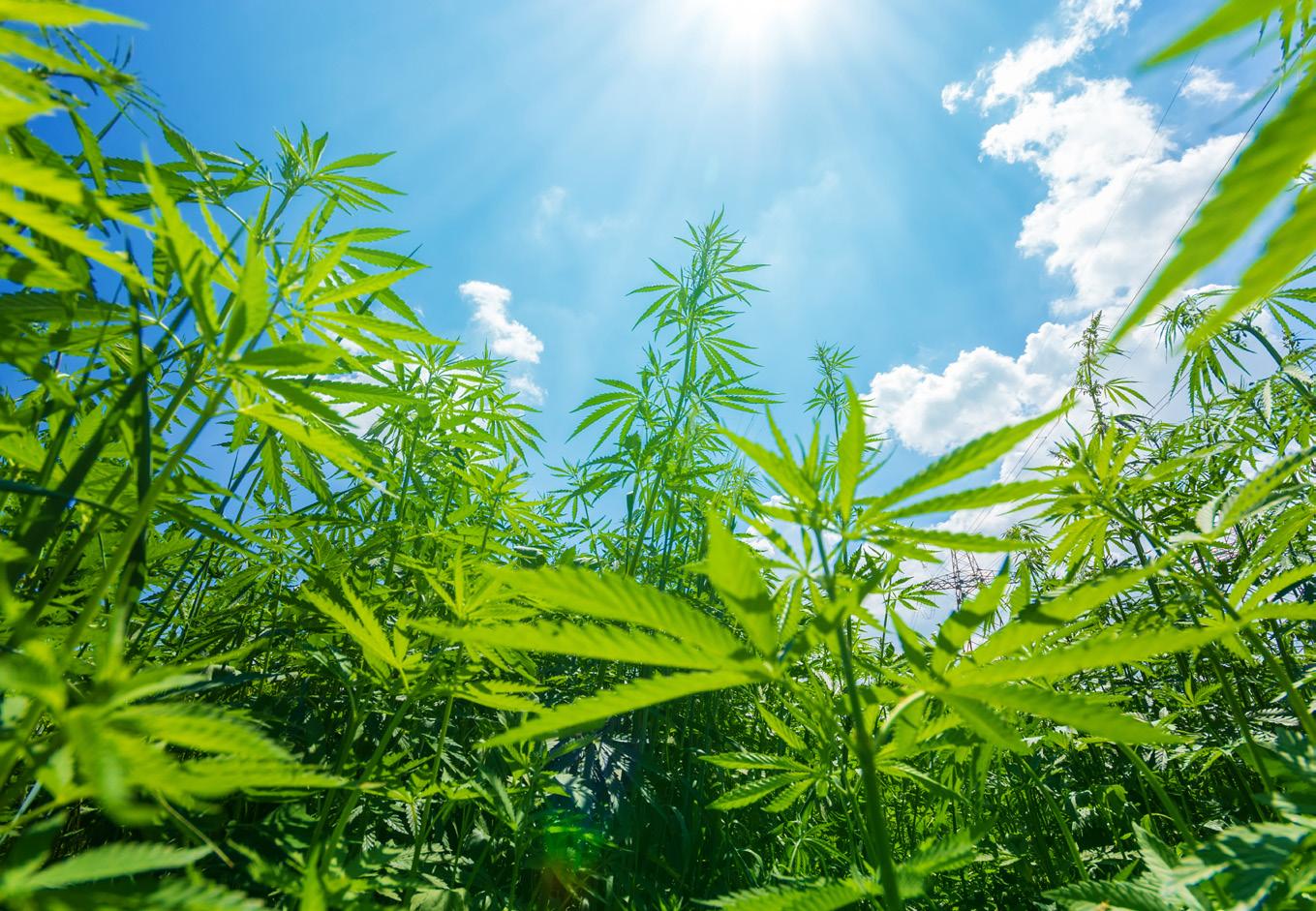
New England Cannabis Convention
Hynes Convention Center | Boston, MA
March 22–23, 2024
Maryland Cannabis Convention
Blue Sky Bank’s experienced cannabis banking team offers expertise and tailored solutions nationwide to make cannabis business banking safe and simple.
This commercial business account is designed for licensed operators working directly with the cannabis plant.
We also provide financial services to businesses that provide ancillary services to the cannabis industry, such as manufacturers, soil & nutrients, accountants, contractors, and brokers.
Baltimore Convention Center | Baltimore, MD
May 3–4, 2024
Illinois Cannabis Convention
Schaumburg Convention Center | Chicago, IL
May 31–June 1, 2024
Vermont Cannabis & Hemp Convention
Champlain Valley Expo | Burlington, VT
June 14–15, 2024
New Jersey Cannabis Convention
AC Convention Center | Atlantic City, NJ
September 6–7, 2024
Michigan Cannabis Convention DeVos Place | Grand Rapids, MI
September 20–21, 2024
Connecticut Cannabis Convention XL Center | Hartford, CT
Oct 4–5, 2024
New York Cannabis Convention NYS Fairgrounds | Syracuse, NY
October 25–26, 2024
For info on exhibiting, sponsoring, speaking, or attending, visit: necann.com

Apotheculture Club will return to Detroit for the fifth time on May 17, collaborating with Uplifted Cannabis Co. for a signature cannabis-infused dining and music experience.
The event begins with mingling at the club’s private residence at 5 p.m., followed by a multi-course dinner. After dinner, transportation is provided to the Detroit Opera for a performance of “The Cunning Little Vixen,” after which everyone returns to the residence.
Check out Apotheculture Club on Instagram: @apothecultureclub.
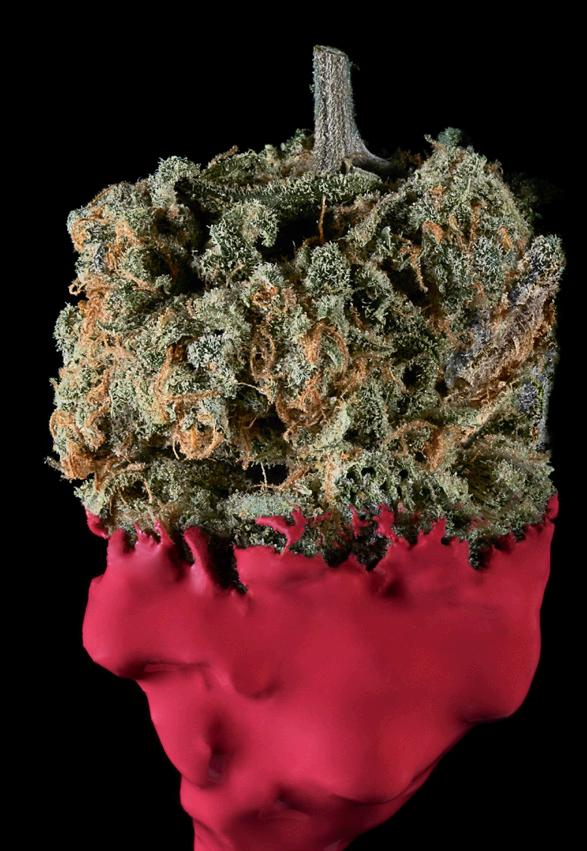
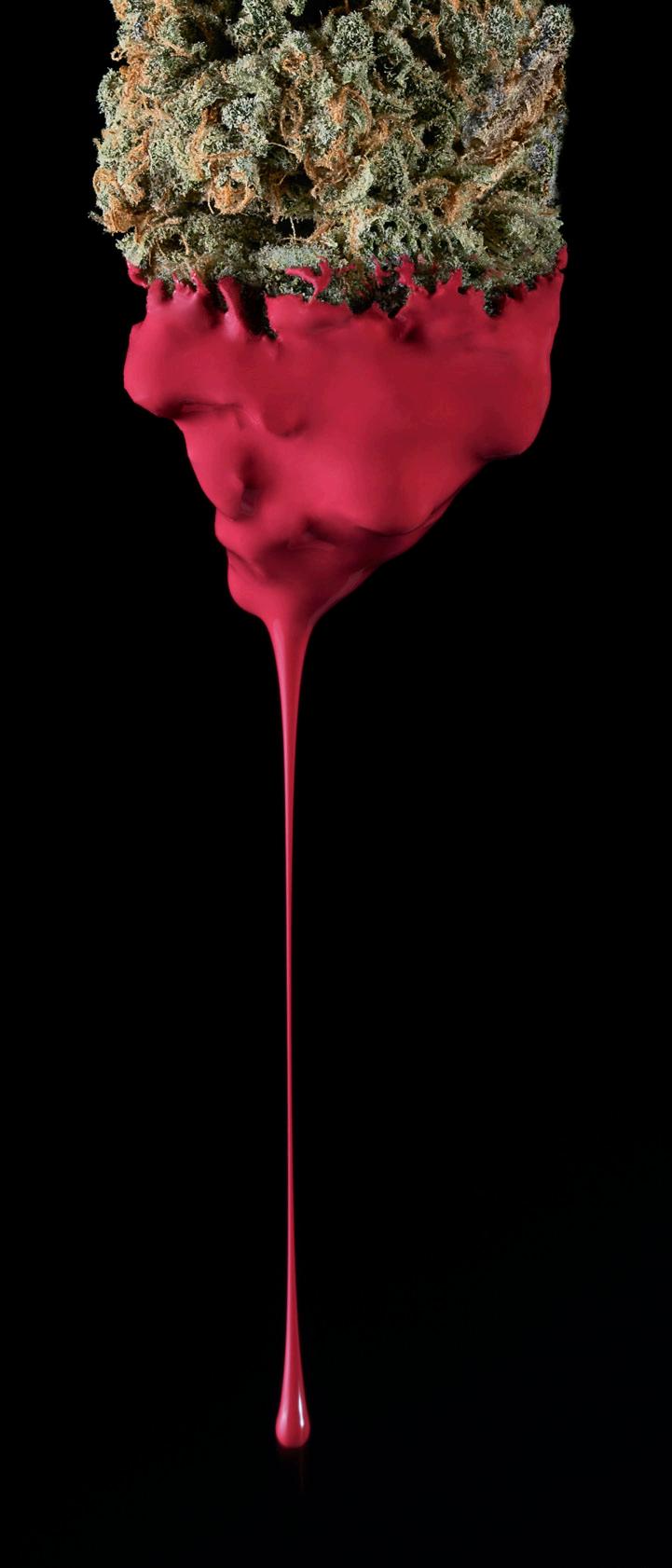
Los Angeles-born Packwoods, a renowned brand specializing in premium cannabis products, is expanding its national presence and entering the Massachusetts market. Soon-to-be available products include its 3-pack of ultra-premium, hand-rolled cigarillos, hand-rolled blunts, and hand-crafted vacuum-infused live rosin in premium ice water hash-coated flower. Check out their other o erings at www.packwoods.com.
“I needed a deeper understanding of what I was going through, so I could actually figure out how to live with it. PTSD is something you have forever. I was trying to save my life at the end of the day.”
—Major Jim McClendon
Major Jim McClendon leads the charge for change.
Major Jim McClendon didn’t have an easy return to civilian life after serving his country. The depression, anxiety, and pain made getting up every day a challenge.
The former Marine from Philadelphia did manage to readjust his life—confronting his post-traumatic stress disorder (PTSD) and all the trials and tribulations that came with it, including homelessness—and began in a new direction.
He credits cannabis for his transformation and successes and promotes the plant’s benefits to all who will listen. Sadly, his story isn’t unique among returning soldiers, but it needs to be told repeatedly until fundamental changes are enacted.
With four years of proud service as a Marine, including a tour in Iraq from 2008 to 2009, McClendon came home with issues he was painfully aware of but had no idea how to deal with. His PTSD eventually cost him a management career, friends, and a home. His mental and physical health deteriorated. If he slept more than two hours, he considered it a good night.
After years of self-medicating with alcohol and street weed, he went to the Veterans Administration (VA) in 2014 for an evaluation, where he was officially diagnosed with PTSD.
He tried various ways to cope with the illness but decided the help he needed wasn’t coming
 TEXT GRETCHEN A. VAN-MONETTE PHOTOS COURTESY OF MAJOR PAPERS
TEXT GRETCHEN A. VAN-MONETTE PHOTOS COURTESY OF MAJOR PAPERS



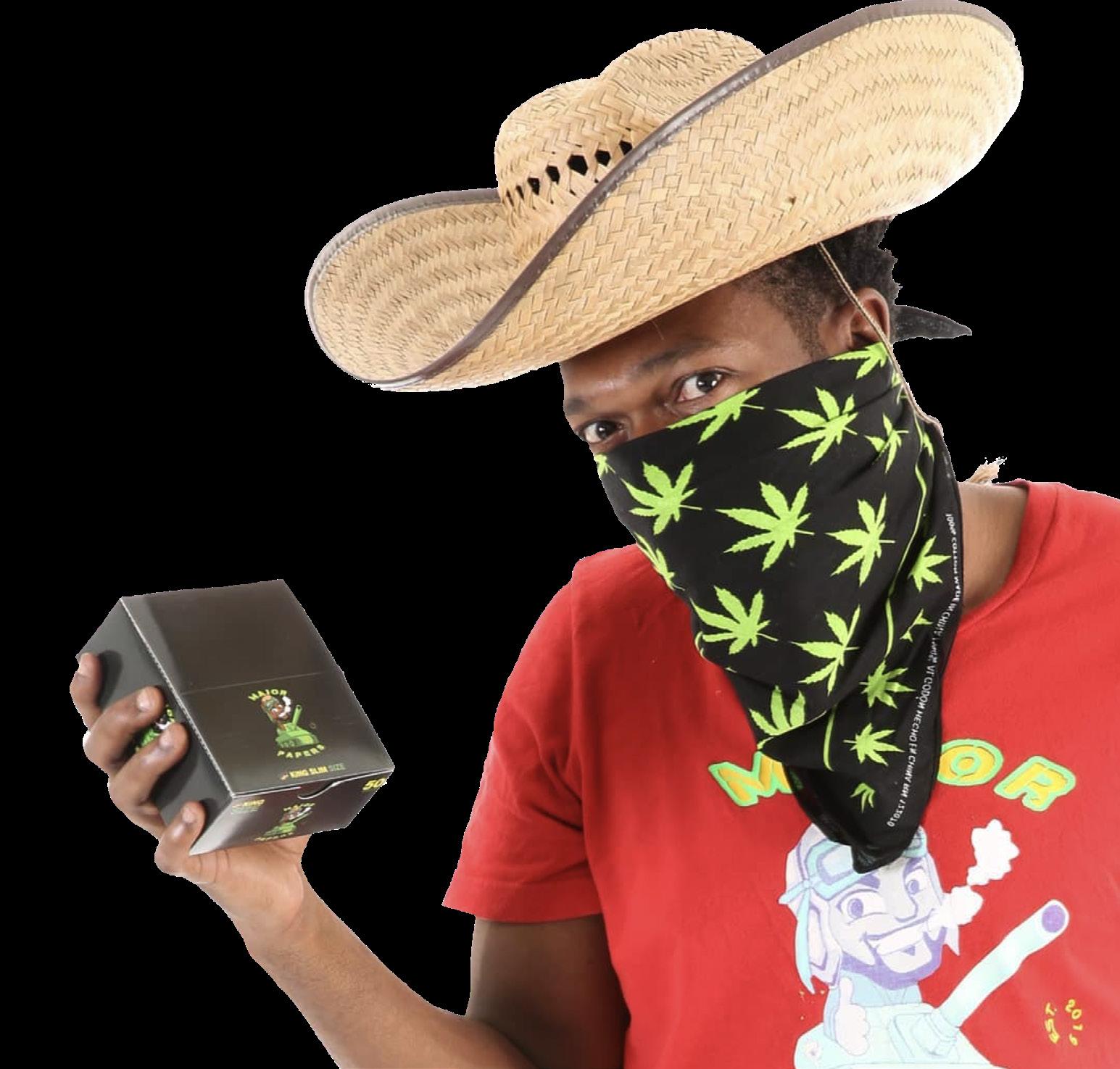
from the VA. “They were just going to put me on drugs that I didn’t want to be on,” he says. “I already knew from seeing other veterans and hearing the horror stories of the VA that I didn’t want to go the pharmaceutical route.
“I needed a deeper understanding of what I was going through, so I could actually figure out how to live with it,” McClendon adds. “PTSD is something you have forever. I was trying to save my life at the end of the day.”
A chance encounter with a friend and former soldier led to a life-sav-
ing lightbulb moment when he rediscovered marijuana, and his life took a decided upturn.
“When I started researching marijuana, the facts were right there,” says McClendon. “No one has ever died of a marijuana overdose, ever.” From his personal experience, he knew that statistic didn’t apply to alcohol or pharmaceuticals.
Once McClendon understood the mental health benefits of cannabis, he began smoking weed; eventually, he even tried psychedelic therapy.
Acid wasn’t his “twist,” but mushrooms gave him some reprieve. Yet it has been marijuana that consistently provides daily relief from physical pain and mental stresses.
“I usually smoke blunts, but since getting older, I’ve been resorting more to concentrates and joints,” he says. McClendon uses different strains for multiple problems, but indica is a favorite because it relaxes him. “I’m not tense or afraid of someone kicking down the door. Without marijuana, I wouldn’t be here,” he says.
McClendon literally puts his money where his mouth is. After his reincarnation, McClendon decided to get into the cannabis coalition and launched a line of hemp-rolling papers called Major Papers. The papers are sold at some shops across the Philadelphia area.
“Rolling papers were a market I knew didn’t have much liability, and it was easier to get into,” he says. “Also, I won’t invest in something unless I personally would use it.










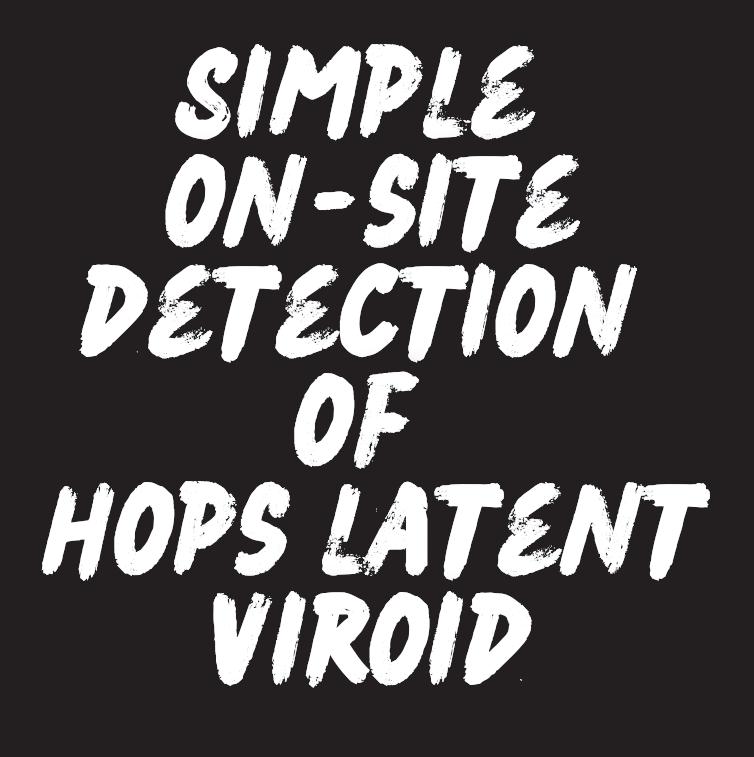


These extremely durable and long-lasting rolling papers provide one of the smoothest smokes you’ll experience with rolling papers.”
McClendon says he donates a portion of the rolling paper proceeds to veterans in need and or-
isn’t a shot at any veterans’ organizations, but most of the proceeds for these charities go to expenses outside of actual veterans.”
Marching Forward
McClendon’s own experience has made him a
“I’m not tense or afraid of someone kicking down the door. Without marijuana, I wouldn’t be here.”
—Major Jim McClendon
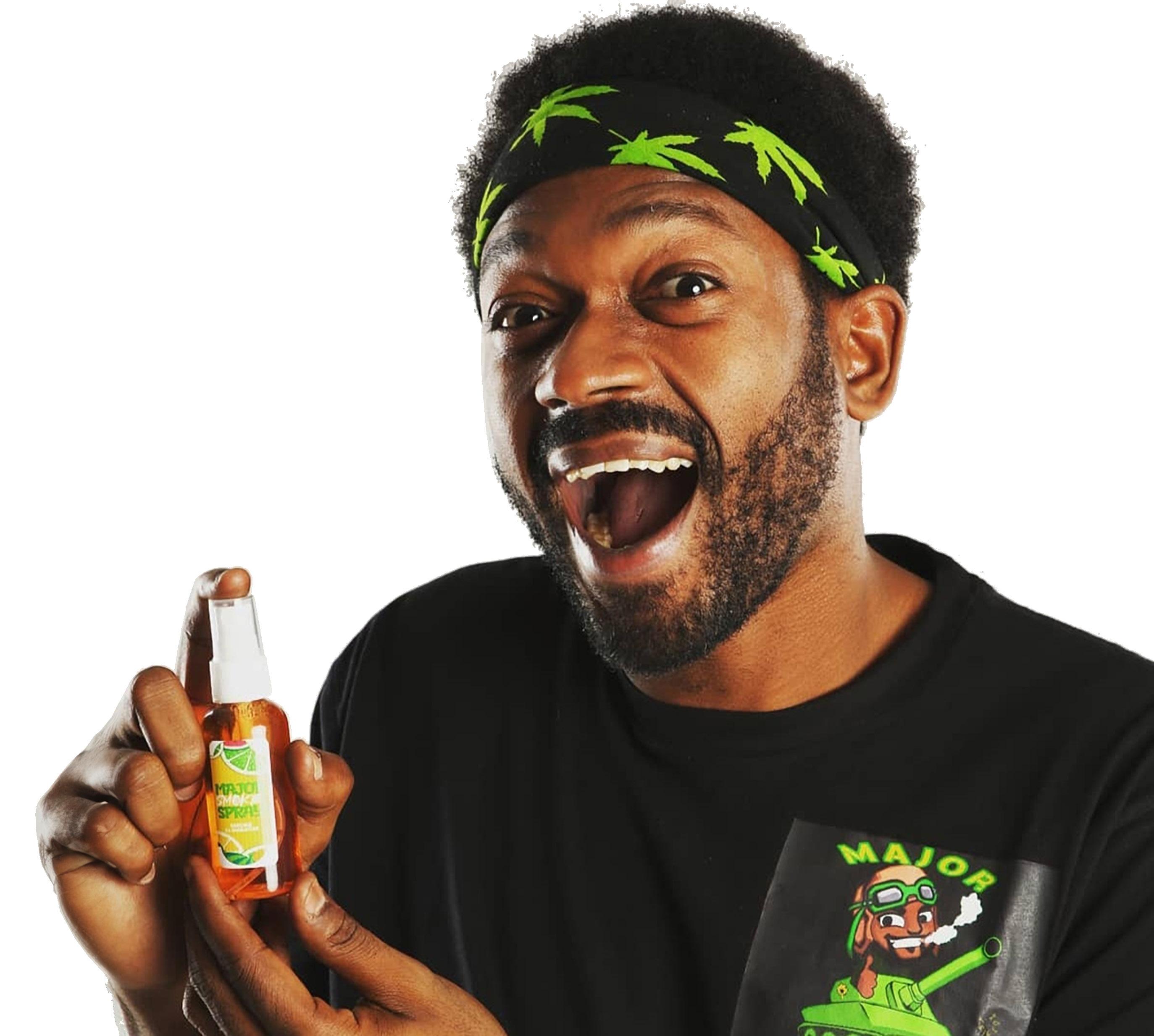


Not since the 1960s have hallucinogens been so popular and widely discussed. With medical breakthroughs and new research, it’s clear that we are in a psychedelic renaissance.





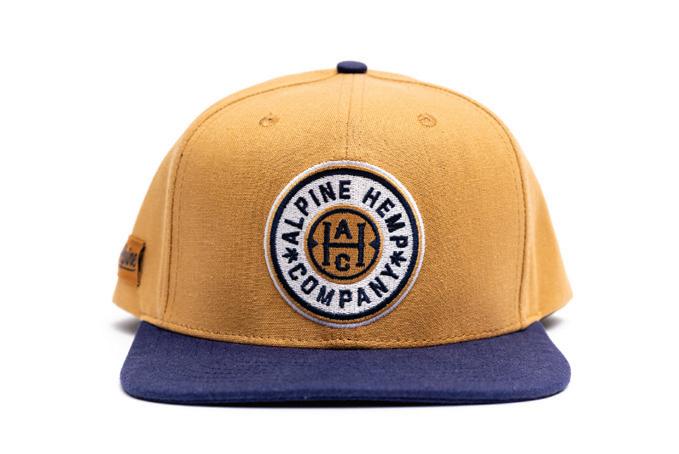

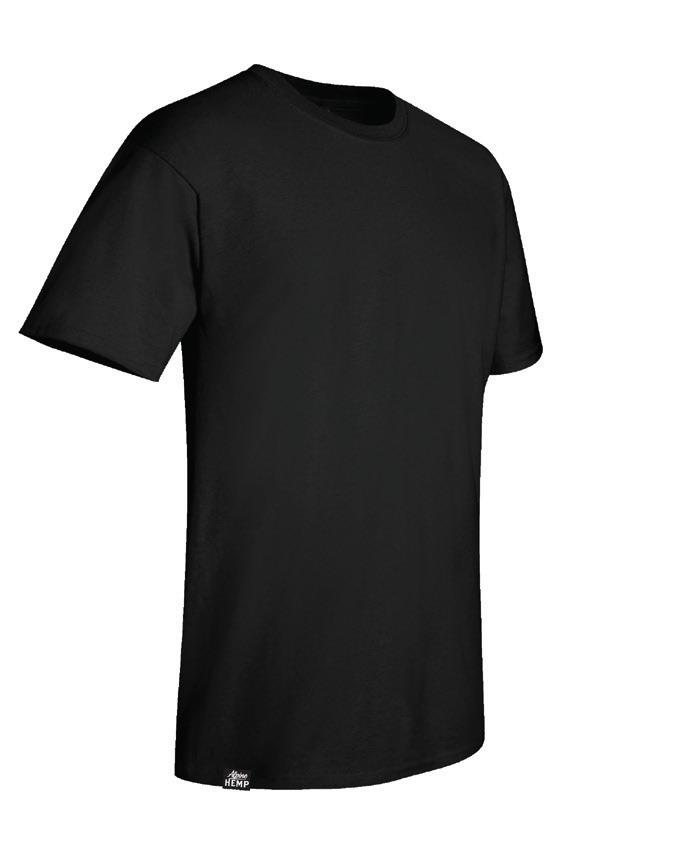



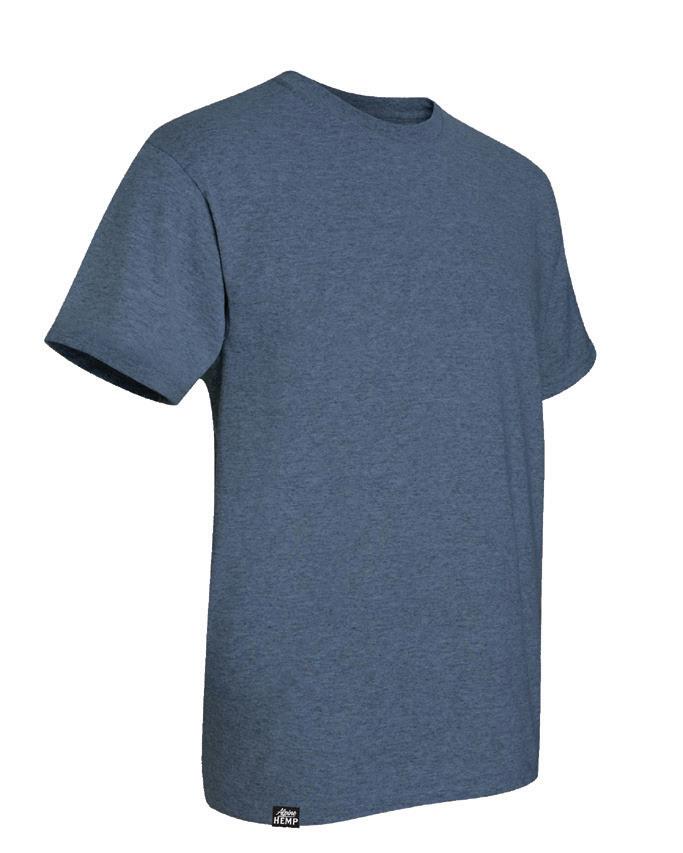
There are a ton of hot topics swirling around the cannabis industry, and lately, everyone I know is discussing psychedelics. Currently, there seems to be a whole new world of psychoactive drugs coming to the forefront and breaching the mainstream.
Psychedelics, in a broad stroke, are a subclass of hallucinogenic drugs that seek to alter “normal” mental states of being. Users often describe states of euphoria, a distorted sense of time and place, visual and auditory changes, and an altered state of consciousness. These “trips” often lead to mystical experiences and a deeper connection to our interior and external worlds.
However, there is still much misinformation (and questions) surrounding psychedelics. Science has begun to explore the depth of how psychedelics affect the psyche and initial findings suggest the drugs can be used not just for enhanced mental experiences but as an effective tool to treat and manage various mental and emotional conditions.
Good candidates for psychedelics are those who have tried traditional treatments for health conditions with little or no success, such as depression, anxiety, post-tramautic stress disorder (PTSD), addiction, eating disorders, and chronic pain.
But as with every type of drug, psychedelics are not a cure-all, nor do they work for everyone.
Some people are not good candidates for psychedelic exploration, such as anyone with a history of psychosis or schizophrenia, pregnant or breastfeeding women,

and individuals with serious heart or other medical conditions. Also, taking certain medications can have an adverse effect when combined with psychedelics.
So, what does science have to say about psychedelics? Here are four commonly used psychedelics that have received the most attention, how they work, and what they may help treat.
Ketamine is currently the only psychedelic the FDA has approved to treat mental health issues such as treatment-resistant depression and anxiety disorders. Patients report a feeling of detachment from their body and surroundings and a heightened sense of awareness of their thoughts and emotions. Research
has found a rapid and significant reduction in depression and symptoms of anxiety, and effects may last for weeks or months after treatment. Ketamine has been shown to be non-habit-forming when used in a medical setting, although, as with most things, there is potential for abuse.
MDMA is used in talk therapy and can help patients process traumatic memories and develop new coping mechanisms. Patients report strong feelings of love, empathy, and a deeper connection with others. Some report increased energy, sensations of euphoria, and a reduction of inhibitions. MDMA is often used to treat PTSD, social anxiety disorder (SAD), and autism spectrum disorder (ASD).

Want to take a trip, but not sure how to begin? Here are three tips.
Set and Setting
Where and when you take drugs should be carefully considered and thought out and not unnecessarily rushed. “Set” refers to one’s own mindset. “Setting” refers to the location. Where will you be most comfortable? Some people prefer to be outside exploring nature, while others prefer to relax at home. If you’re the latter, dim the lights, turn on some gentle tunes, and create a relaxing, comfortable space. And, don’t forget that your current headspace will likely impact the results of your trip. Being prepared, relaxed, and ready to go will de nitely help your mind on your psychedelic journey.
Pack a Snack Pack
Wherever you decide to partake, make sure you have some supplies at the ready. Cosmic exploration into the inner depths of your mind may look and feel di erent to you than it does to a friend. Some may want to eat, while others have no interest in food. Water and herbal teas are good to have on hand, and if you’re taking ecstasy, gum or candy can help with any clenchedjaw sensations.
Partner Up
Do you have a friend or family member who has tripped before? If so, having an experienced sober companion can be helpful and make you feel safe. It can also help to alleviate any anxiety that you might feel should a mind-bending question arise.

Common outcomes of MDMA treatment include reduced symptoms related to PTSD and trauma-related memories, improved social functioning in SAD patients, and favorable communication in ASD patients.
Patients who ingest mushrooms often report experiences of profound spiritual and emotional connections. Psilocybin can produce hallucinations that can influence your thinking, but which can also be challenging and transformative in positive ways. Common benefits include a reduction in depression symptoms, with some people experiencing full remis-
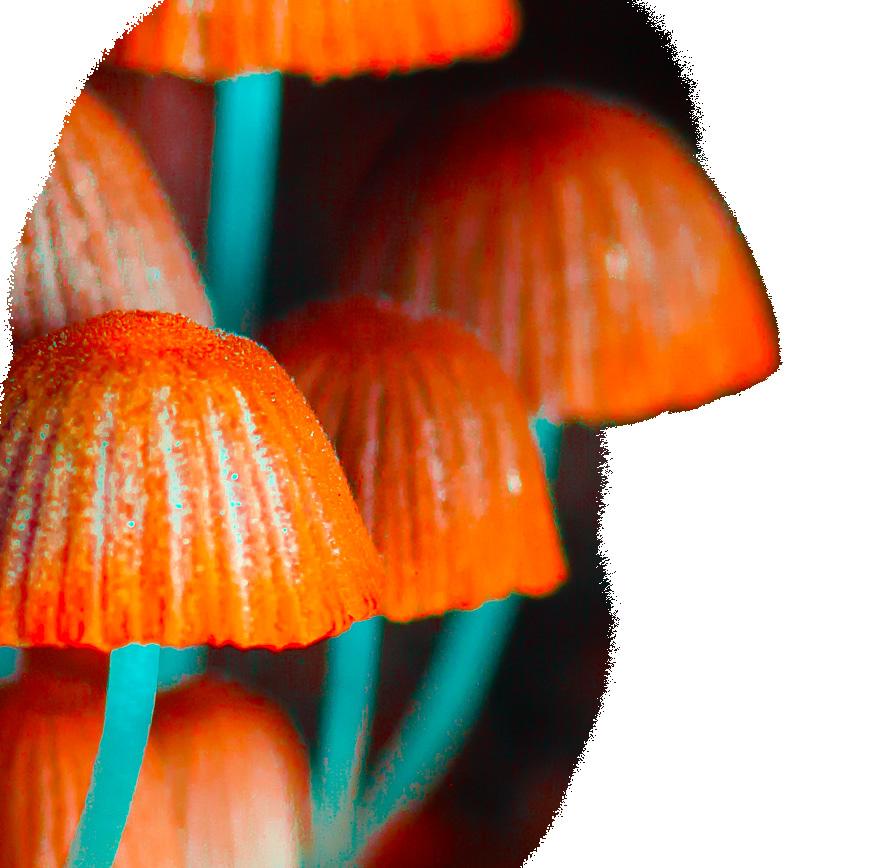
PSYCHEDELIC
RESOURCE HOTLINE
Do you have questions about psychedelics? The Psychedelic Info Line is the world’s rst-of-itskind research call center devoted to reducing harm and improving outcomes by o ering you the most up-todate information on psychedelics. While they cannot o er medical advice or promote psychedelic use, they have a wide breadth of peer-reviewed studies in their extensive library taken from thousands of participants worldwide.
Call 1-888-210-3553
sion. Psilocybin is also used as a coping mechanism for cancer patients and to reduce anxiety and fear in end-of-life patients.
The most visually stimulating of psychedelics, LSD creates powerful hallucinations that alter your state of consciousness. It can produce a euphoric trip that leaves patients feeling more creative and connected with their own spirituality and with the world around them. LSD is used to reduce alcohol cravings for people who suffer from alcohol use disorder, and to relieve pain caused by cluster headaches.
(Monday to Thursday, 8 am to 5 pm MST); email support@unlimitedsciences. org or visit www. unlimitedsciences.org/ psychedelic-info-line.
Sound bathing o ers a new, old way to meditate and explore a deeper introspection.
Two golden gongs propped on stands gazed outward into the crowd. Glasses of milky tea were offered to the practitioners crammed together on yoga mats and camping mattresses. Well-kept men in flannels lay beside patrons in Grateful Dead shirts and fairy wings. I removed my shoes and got comfortable on my yoga mat, rolling up a soft, synthetic blanket as my pillow. Overhead hung an unused disco ball.
I was here at an event space in Eugene, Oregon, for my first sound bath, a form of meditation using acoustics emitted from devices such as gongs, Tibetan singing bowls, drums, and tuning forks.
While sound baths appear to be the rage with new-age institutions like the Psilo temple, the practice itself is ancient and has been used by cultures worldwide for generations. Direct origins are fuzzy, but the practice has been linked to Tibet and dates back more than 2,000 years. Aboriginal didgeridoos (dating back 40,000 years in Australia), singing, and serene walks through nature are also types of sound baths.
Traditional guided meditation brings your focus back to the
breath, a mantra, an emotion, or a part of the body. “But during a sound bath, the sound itself is guiding the meditation,” says Sara Auster, a renowned sound therapist and meditation teacher in New York City who provides on-demand sound baths online and travels the world, providing sound-healing experiences. “The sound helps facilitate awareness of the present moment.”
My hour-long sound bath was hosted by the local Psilo Temple, a registered religious institution legally allowed to distribute psychedelic mushrooms to practitioners as part of their religious practice. Taking psilocybin as part of the sound bath is optional (it’s in the tea and I politely passed).
As participants finished their mushroom-infused tea and settled into their mats, our facilitator, James Hin, a sound healer and founder of Psilo Temple, made his rounds, hugging familiar faces with well-tattooed arms.
Soon, the lights dimmed. We began with deep breathing, and then the sounds began.
Hin began playing crystal singing bowls, rattling my brain. The alien-like sounds were so intense it was difficult to think of anything else. As the session continued, Hin switched to gongs and a “waterfall disk”— a flattened wooden instrument that sounds like a deluge of falling water.
My brain drifted in and out of a meditative state. I stared up at the ceiling, where shapes like drops of water and stars danced overhead from a small projector.
“Sound bathing is relaxing but also allows you to introspect,” says Jim Close, a volunteer and member of the Psilo Temple. “I also find it takes me to a very spiritual place. It allows me to rest and quieten my inner voice.”
In some instances, the sounds Hin played did relax me. In other moments I felt uneasy, uncomfortable, and unable to focus. I could feel my chest tighten and release tension as I worked through emotions and varying states of awareness. This reaction turns out to be perfectly normal.
“Everyone has a different experience in the space, depending on what they’re going through and
TEXT CLAIRE BARBER PHOTOS COURTESY OF SARA AUSTER


what they’re processing,” says Close. “It gives people space to let their emotions out however that may be, whether that’s euphoric, introspective, or distressing.”
Research on the therapeutic benefits of sound bathing is thin.
But Auster says that the meditative effects of sound bathing help deepen and slow breathing, which lowers stress hormone levels and allows the immune system’s healing power to function more efficiently. “It also can lower blood pressure and activate the centers of the brain that release natural pain relievers,” she says.
Mark Clem, owner and operator of a sound meditation service called Sonic Journey in rural Oregon, says that training among



practitioners is, for the most part, “self-designed.” Finding a practitioner you trust and jive with takes time, especially since a standard certification is largely nonexistent. “Everybody has a style,” says Clem.
Both Auster and Clem have integrated sound bathing into traditional, Western medicine. Auster has partnered with an FDA-approved migraine medication as a complementary treatment, and Clem recently began offering sound baths to patients at the nearby Siletz Community Health Clinic.
No two sound baths are the same. “Although consistency is something that I strive for,” says Clem, “It’s a very fluid interaction that’s
happening between the player and the participants.” He recommends that, because the experience can sometimes be both uncomfortable and deeply emotional, choosing a practitioner and space where you feel supported is essential.
Instead of focusing on certifications, familiarize yourself with practitioners with whom your provider may have apprenticed or trained. Clem, for example, has mentored and been influenced by many prominent figures in the Kundalini yoga tradition, which uses gongs in their practice.
While some facilities like Psilo Temple also integrate psilocybin or cannabis into their sound bathing experience, it is never required that you have to indulge.


Good bacteria in your gut can put you on the path to greater health. Here’s how food—and cannabis—can lead the way.
TEXT EUGENIA MERKOULOV AND CAROLYN SCOTTThe Greek physician Hippocrates, commonly called the father of modern medicine, famously said, “Let food be thy medicine, and medicine be thy food.”
More than 2,000 years later, science confi rms this ancient insight.
The food that Earth produces offers vitamins and minerals the body needs to function and ward off illnesses, protein to help build muscle, and carbohydrates to give us energy. Drinking plenty of water helps it all work.
But the key to how food supports our health lies deep in our gut.
What lies within
The human gut has microbes (bacteria, fungi, etc.) that reside within the entire gastrointestinal (GI) tract and play a crucial role in the body’s optimal physiological functioning. When in
balance and strong in numbers, this microscopic army assists in major functions such as metabolizing your vitamins, breaking down carbohydrates, training the immune system to respond to the environment, and bolstering neurological performance.
However, various disorders may develop when the gut microbiota army numbers get low or severely skewed. Most of these, including type 2 diabetes, hypertension, anxiety, and allergies, are relatively common in modern times. The average modern diet, chemicals, toxins in our food and environment, and long rounds of prescribed antibiotics can all impede the strength of our gut bacteria.
Know your biotics
You may have heard two new buzzwords recently:
probiotics and prebiotics. Though similar, they have distinct functions. Interestingly enough, cannabis and mushrooms both have roles to play in our gut biome.
Probiotics are foods that contain live microorganisms and work to repopulate the gut microbiome directly. Probiotics include kimchi, pickles, tempeh, yogurt, and beverages like kombucha and kefi r. Prebiotics are the provisions for our tiny but mighty army, containing certain types of fibers that help support the population of beneficial bacteria in the gut.
Prebiotics are found in all edible mushrooms and certain foods from the plant kingdom, such as leafy greens, bananas, apples, cabbage, oats, flax seeds, and—you guessed it—cannabis.
Before highlighting the prebiotic benefits of
these powerful plants and fantastic fungi, let’s mention another emerging corner of clinical research: the endocannabinoid system. This system was only discovered in humans in 1988. In short, your body is fi lled with receptors designed explicitly for cannabinoids—the molecules that are so abundant in cannabis (some of which are intoxicating, some of which are not). Though cannabinoids can be found in tiny doses in some other plant foods, they are most abundant in cannabis.
New research also exists on the endocannabinoid system’s role in digestive health and its connection with the gut microbiome. This exciting new focus will undoubtedly lead to groundbreaking developments, especially in the area of immune function.
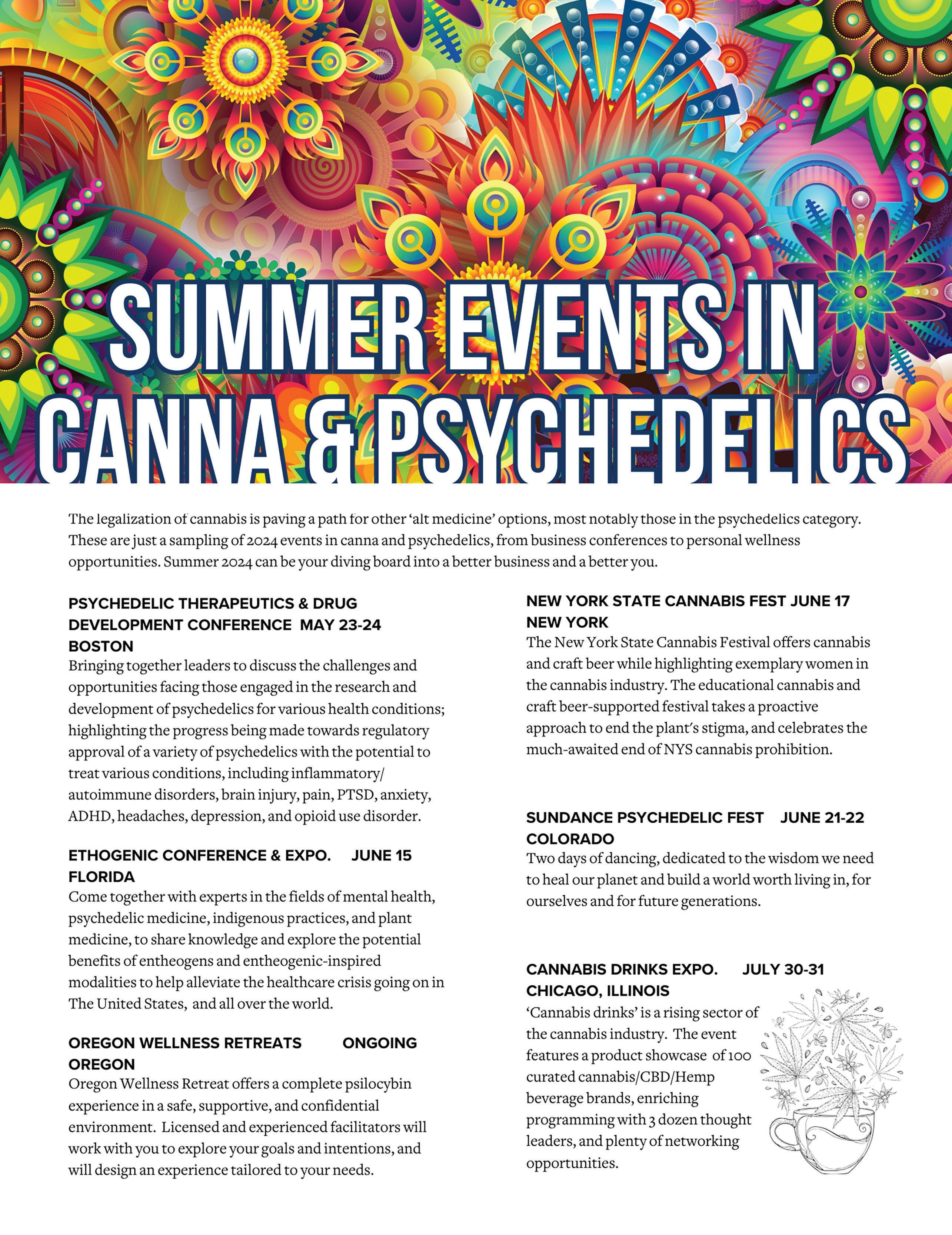
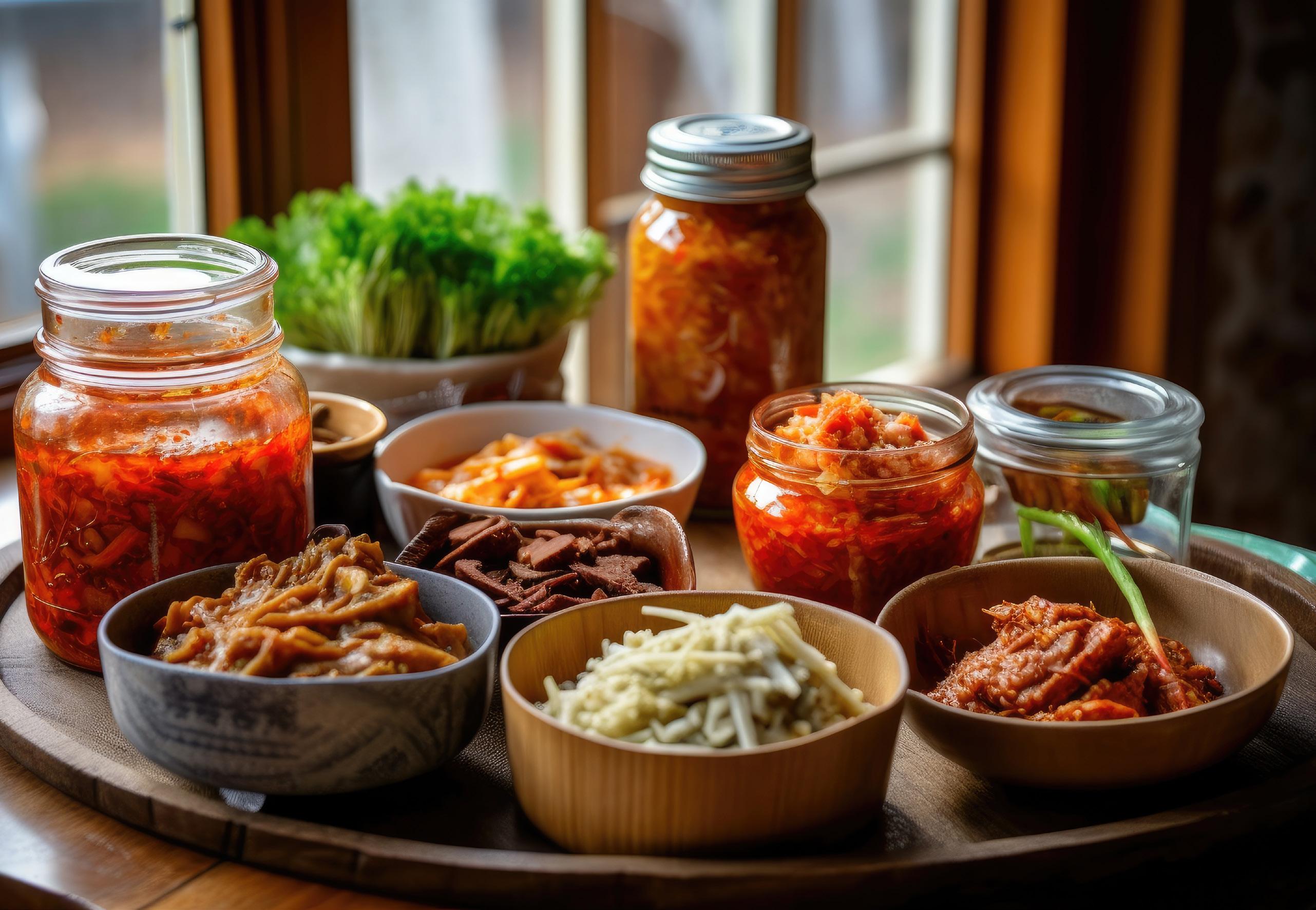
In the meantime, we can be sure that cannabis consumption supports GI tract wellness and helps maintain a healthy gut microbiome.
The big picture tells us that tailoring your diet is vital to maintaining gut health. However, we must eliminate the bad before including the good stuff.
Unfortunately, the typical American diet consists of foods full of synthetic preservatives, saturated fats, and sugars, all of which feed the harmful microbes in the gut. Synthetic preserva-
tives and saturated fats are found in packaged and fried foods. Sugar, however, isn’t just found in your favorite dessert or your late-night cheat snack. Processed sugars are often added to sauces, salad dressings, and even cured lunch meat.
Anything made with processed flour, like slices of white bread or a bowl of pasta, breaks down into large doses of sugar so quickly that it not only stresses the gut but also exceeds the bloodstream’s capacity to hold the sugar molecules. While eliminating these three primary gut stressors might not be
possible, minimizing their presence is a necessary fi rst step.
Now, onto the good stuff.
Adding prebiotics and probiotics to your diet doesn’t have to be challenging. In fact, it can be quite fun, especially if you boast an adventurous palate. As mentioned earlier, various delicious foods and beverages from multiple cuisines contain live probiotics. The most obvious are fermented foods, like sauerkraut, kimchi, and pickles. Health food stores often stock probiotic foods in their refrigerated section. Yo-
gurt is a popular source of probiotics—look for the words “live cultures” on the label and avoid flavored yogurt, which contains high amounts of sugar.
And if you have a picky palate, probiotic supplements are available at your local grocery store. (Make sure to check with your doctor before taking any over-thecounter supplements.)
Prebiotic foods are likely already part of your diet, and simply increasing your intake of fruits, vegetables, and grains can improve gut health.
And while not all mushrooms are edible,


all edible mushrooms are a vibrant source of prebiotics. Consider exploring beyond the baby bellas and white buttons to include medicinal mushrooms, such as reishi, chaga, cordyceps, or lion’s mane in your culinary creations. Equally
beneficial, whether eaten cooked or raw, these have been used in Traditional Chinese Medicine to promote total body healing and longevity for thousands of years and have just recently entered mainstream holistic wellness practices.
Archeology and biology have revealed that cannabis has been a dietary and medicinal staple for a millennium. Now, science is discovering the benefits. One exciting discovery is that there
are endocannabinoid receptors in the gut. So not only does eating cannabis increase prebiotics in your gut, but probiotics and prebiotics help to bolster your body’s endogenous cannabinoid system.
How should cannabis be consumed for improved gut health? While enjoying meals cooked with cannabis delivers psychoactive effects along with digestive support, let’s not forget that raw cannabis is the new superfood on the block with its incredible nutrient density and notable levels of protein, fiber, and antioxidants.
While you might not find yourself sitting down with a bowl of nugs as your salad course, medicinal cannabis experts are highlighting that cannabis leaves pack the same micronutrients as the buds. The leaves can join your favorite raw fruits and veggies in a highly nutritional and prebiotic-rich smoothie, be added to a salad, used as a garnish, or dehydrated and ground into a tasty superfood powder that can accent almost anything.
The possibilities are endless, and while science uncovers new pathways to health in the labs, we can discover new routes to wellness in our kitchens.
Check



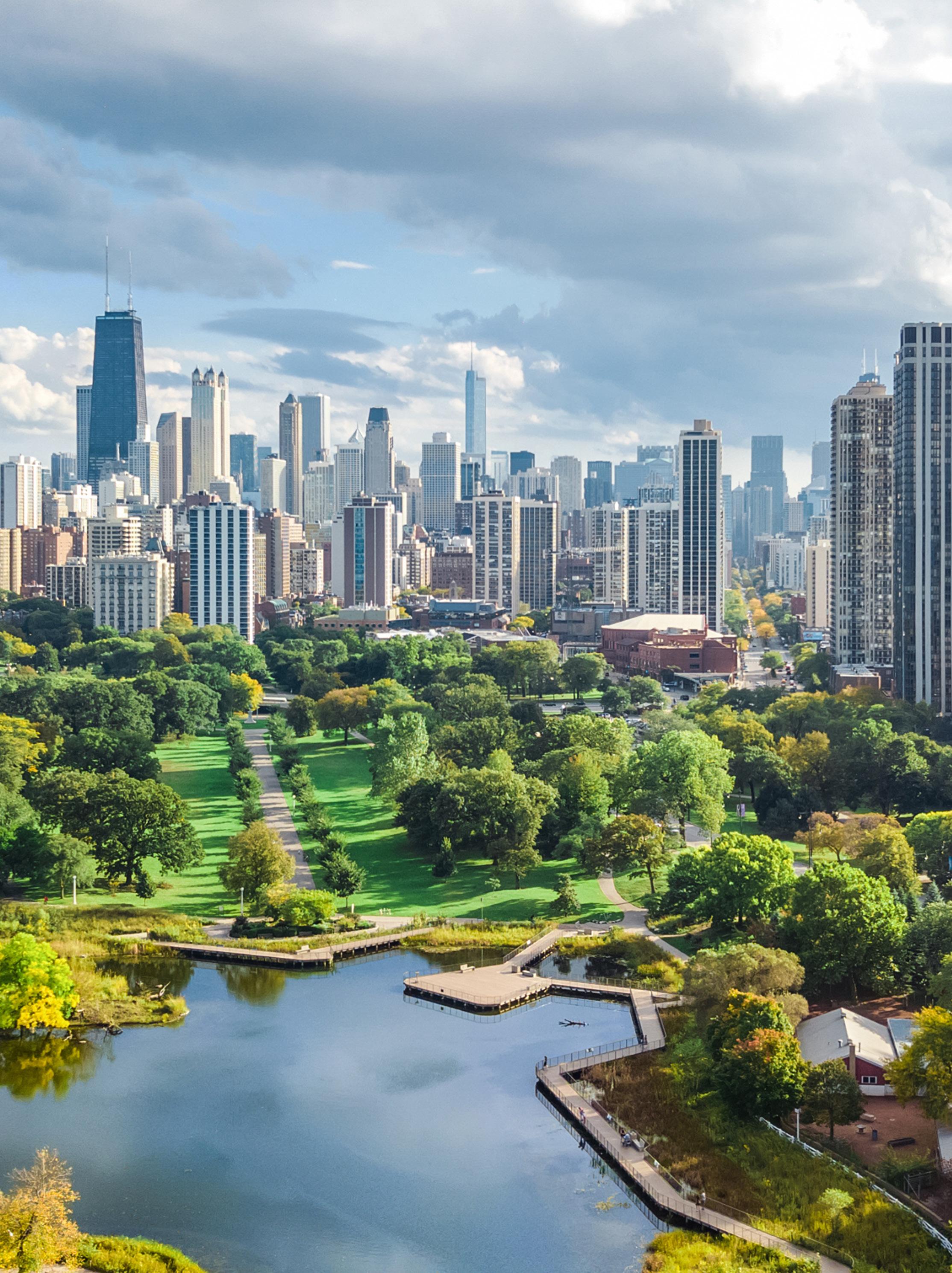

After a rocky introduction into the Michigan market, West Coast-based Muha Meds is ready to make waves.

It came out of nowhere, remembers Muha Meds co-founder and CEO Ari Gawari.
On a fall day in 2023, a knock at the door. Then dozens of agents from Michigan’s Cannabis Regulatory Agency (CRA) swarmed in and flipped their mid-Michigan production facility from top to bottom.
It was an unscheduled audit brought on by perceived compliance irregularities. While the CRA agents noted some incorrect surveillance procedures and faulty operating cameras, Gawari says there was never anything wrong with the marijuana or
products they produced in the facility.
After satisfying CRA compliance requests and undergoing two additional reviews, they restarted operations—only to have another agent come shortly after and shut them down again.
It took a judge’s ruling to acknowledge the CRA had no proof to close them down before Muha Meds could get back to offering their high-end, West Coast-style cannabis products to the Mitten State.
In October 2021, the company settled in middle-of-the-state
Pinconning, which is notable for its exit-ramp cheese shop. Muha Meds took over operations from a failing business and remains the only marijuana production facility in the area.
The company streamlined inhouse manufacturing to maximize efficiency and innovation. Growing vertically, with a vested interest in every level of production, allowed the company to offer weed of unparalleled quality and price point in a tight market.
“We were already popular in Michigan,” says Gawari. “People recognized and knew our name and brand.”




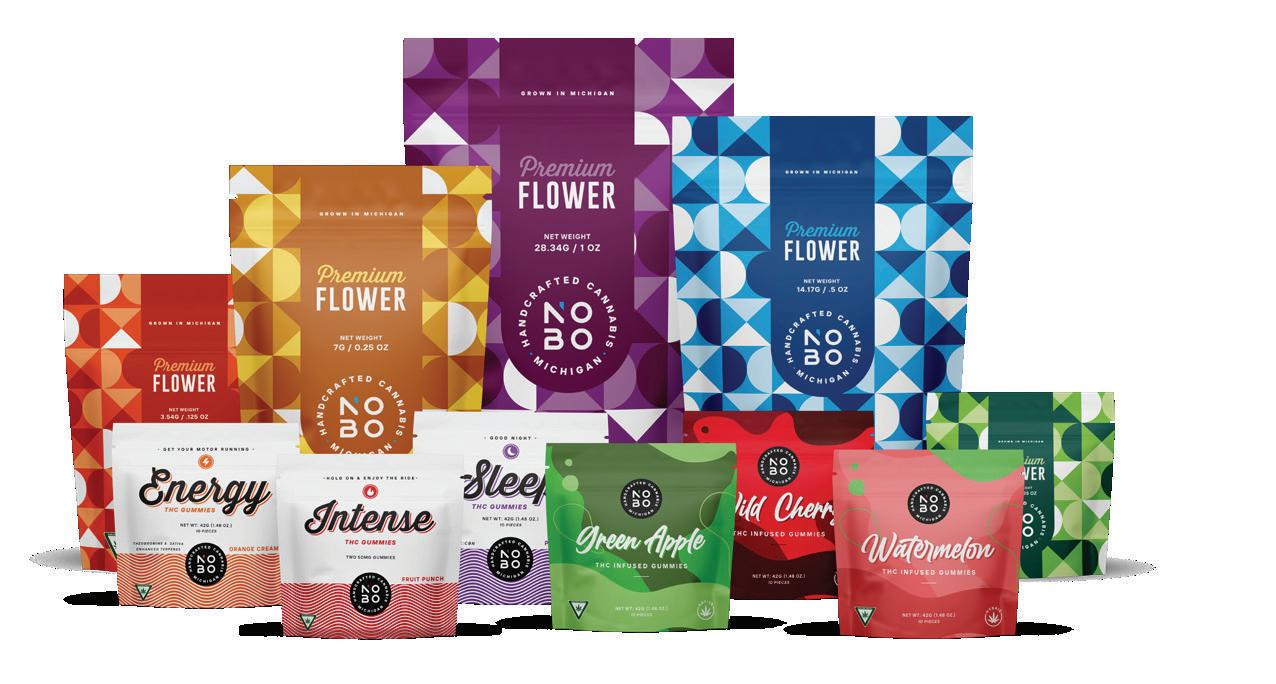
He jokes that Muha Meds single-handedly increased the town’s gross domestic product. The company hired 90 locals and helped sharpen their trade and work skills. Sadly, everyone was laid off when the business was shuttered.
Ironically, the shutdown and subsequent shortage sparked intense interest in and demand for their LA vibe and, since the CRA resolution, the company has enjoyed a solid return to business.
They hired everyone back in Pinconning, and the company has begun expanding its presence into the metro Detroit area.
Recognizing Detroit as a music and fashion mecca, it was natural for the company to expand to Michigan. Muha Meds is almost as well known for its wearables as its weed. The brand is as potent to wear as it is to smoke, featuring an iconic biker, racing styling, and hyped-up graphics.
“Our style not only reflects the quintessential LA vibe but also resonates with those entrenched in the cannabis culture,” says Gawari. “We intend to offer Michigan consumers the same vibe and high that people on the West Coast have been experiencing for a while.”
Fashion, music, and cannabis go hand in hand, so it should be no surprise that Muha Meds is sponsoring Cannabash, one of the biggest cannabis music festivals in Michigan.
The event in Baldwin, next to the Manistee National Forest, is in its third year. No line-up has been announced for the July 13 gathering, but it’s known for bringing together cannabis culture and community with music from the nation’s top artists, focusing on rock, country, and hip hop.
“We’re seeing a growing trend of cannabis-friendly festivals like Cannabash, which signifies a posi-
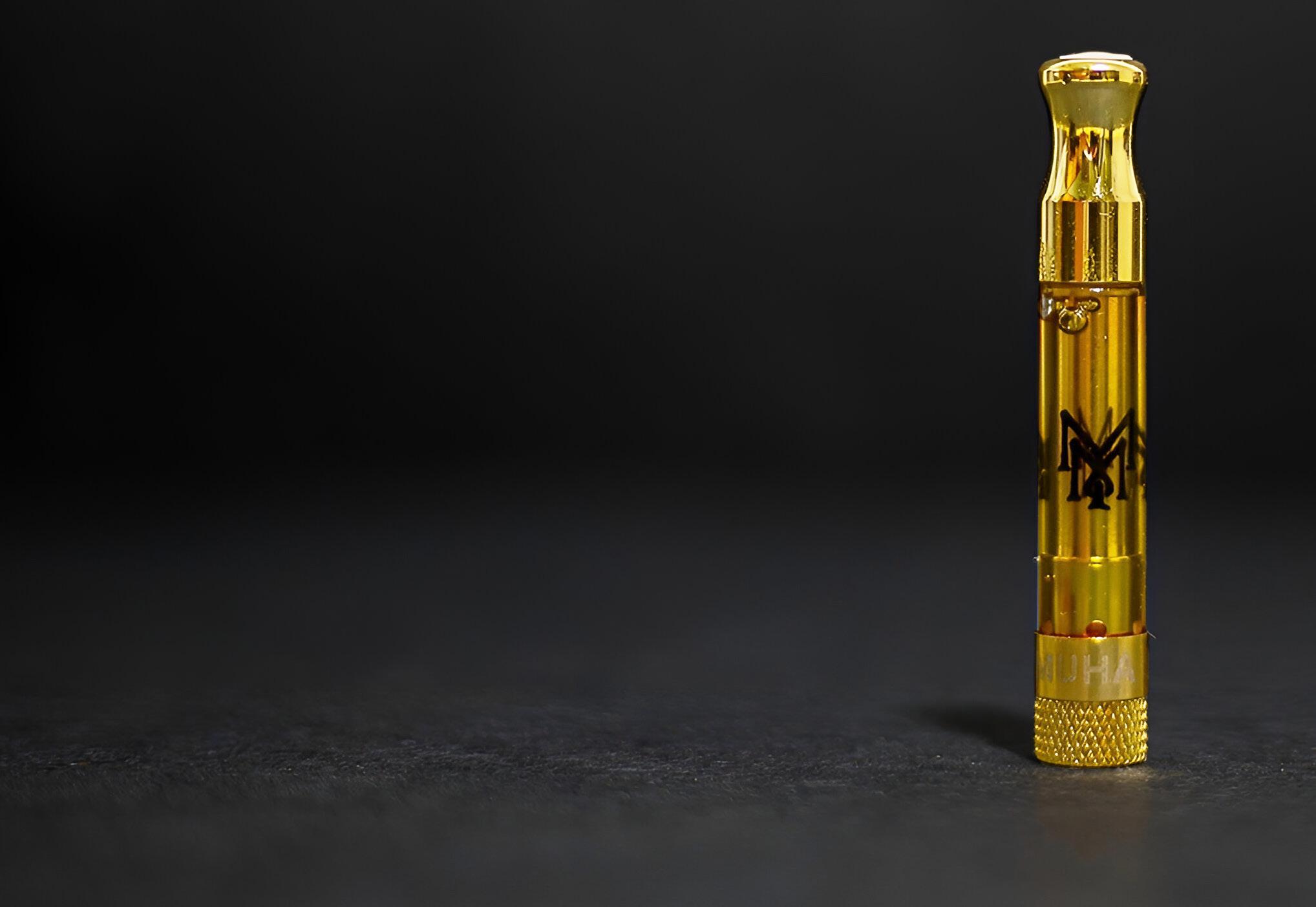
The Muha Meds line is legendary for its distinctive range of products inspired by the vibrant LA vibe. Mix in some Michigan industrial in uence, and Muha Meds is taking a favorite product to the next level.
Muha Meds is rede ning vaping with its 2g Disposable Vape Pen. Their reimagined and redesigned ceramic vape features dual coil chambers and proprietary ceramic heating elements that deliver deep, discreet drags of
California-in uenced craft cannabis.
CEO Ari Gawari explains that these pens o er an unmatched oil-to-coil burn ratio, ensuring a pure and avorful experience surpassing traditional disposables.
“This innovation infuses 20 years of industry knowledge and advancement to provide an unparalleled experience, distinct from anything else,” he says. “We’re setting a new industry standard with our 2g Disposable Vape Pen.”
LEMON DELIGHT
THC – 10 MG
ORANGE BLOSSOM
THC – 10 MG | CBD – 15 MG
VITAMIN C – 20 MG | ELDERBERRY – 5 MG
KRANBERRY KICK
THC – 10 MG | THCV – 2.5 MG
MELLOW MELON
THC – 10 MG | CBG – 10 MG
WILDBERRY DRIFT
THC – 5 MG | CBN – 10 MG
CHAMOMILE - 3 MG
THC – 10 MG
PHARMA GRADE PLANT SCIENCE
EVERYTHING YOUR SEEKING, WITH BEST IN CLASS BIO-DELIVERY.
CONSISTENT
PREDICTABLE
FAST-ON SET
GREAT TASTING
VEGAN AND GLUTEN FREE
TO GET MORE INFORMATION CONTACT: ORDERS@HIGHTEHCCANNA.COM


tive shift towards broader cannabis acceptance in Michigan,” says Gawari. “We’re also noticing an increasing number of festival goers are favoring cannabis over alcohol, and we’re proud to be a part of that significant cultural shift.”
The company recently opened a flagship store in East Detroit, which Gawari sees as a place for Muha fans to connect with other aficionados, find favorite products, get swag, and participate in new drops in real-time. It also allows Muha Meds to engage positively in their new neighborhood.
“Muha Meds is committed to leading by example,” says Gawari. “Our mission goes beyond offering superior products; we strive
to educate, engage, and uplift the communities we’re in.”
On April 18, Muha Meds is co-sponsoring a pre-420 cannabis party supporting the Redemption Foundation, a consortium of cannabis industry professionals and policy experts from across Michigan with a mission “to right the wrongs caused by cannabis prohibition by seeking out opportunities to lift up individuals harmed by the war on cannabis.”
“Our goal is to support and engage in initiatives that align with our brand values and contribute positively to cannabis culture,” says Gawari. “We are committed to our new community and social justice issues. Muha Meds is ready to make some waves in the Third Coast state.”
“WE INTEND TO OFFER MICHIGAN CONSUMERS THE SAME VIBE AND HIGH THAT PEOPLE ON THE WEST COAST HAVE BEEN EXPERIENCING FOR A WHILE.”
—Ari Gawari, CEO, Muha Meds




















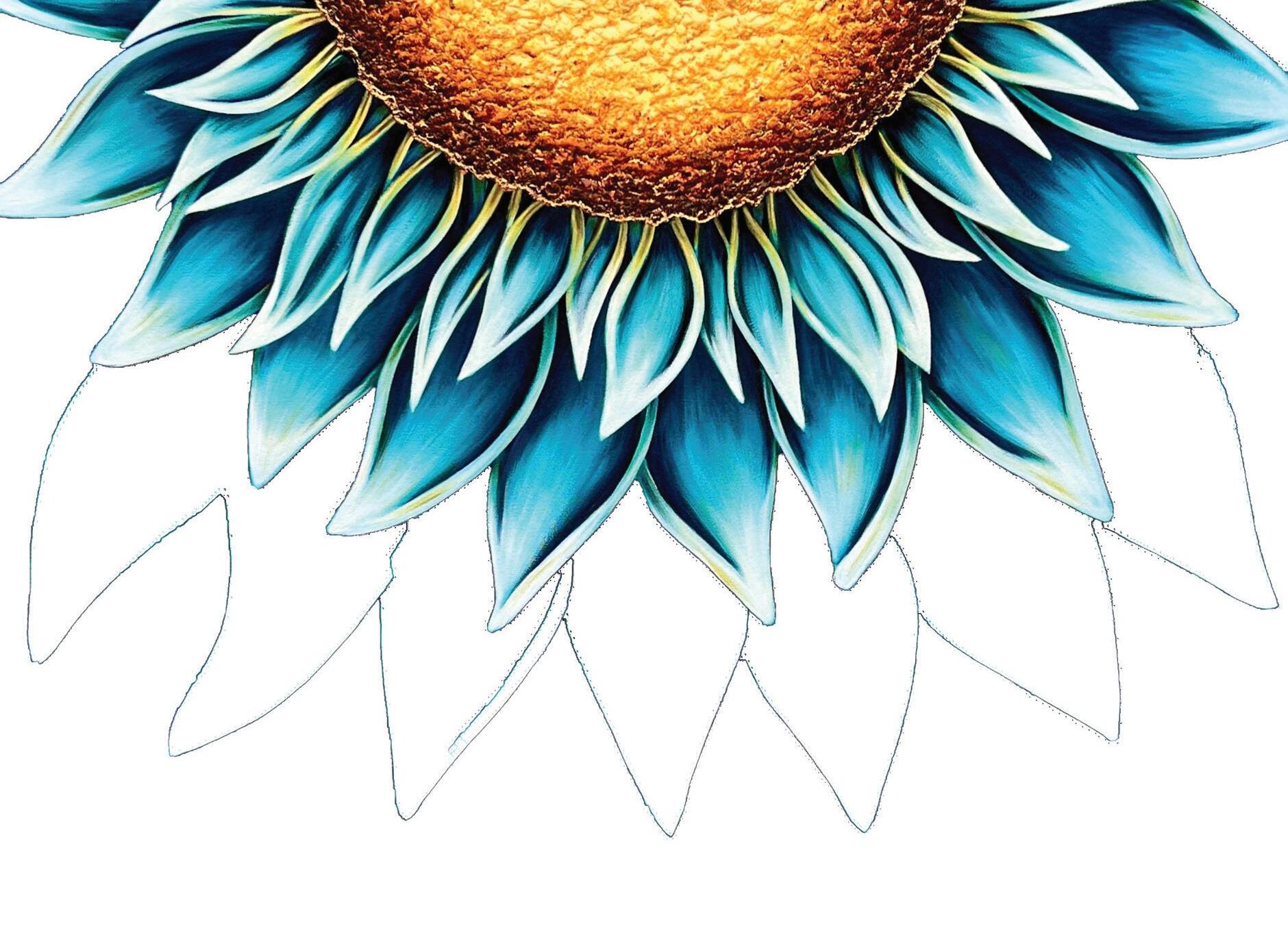








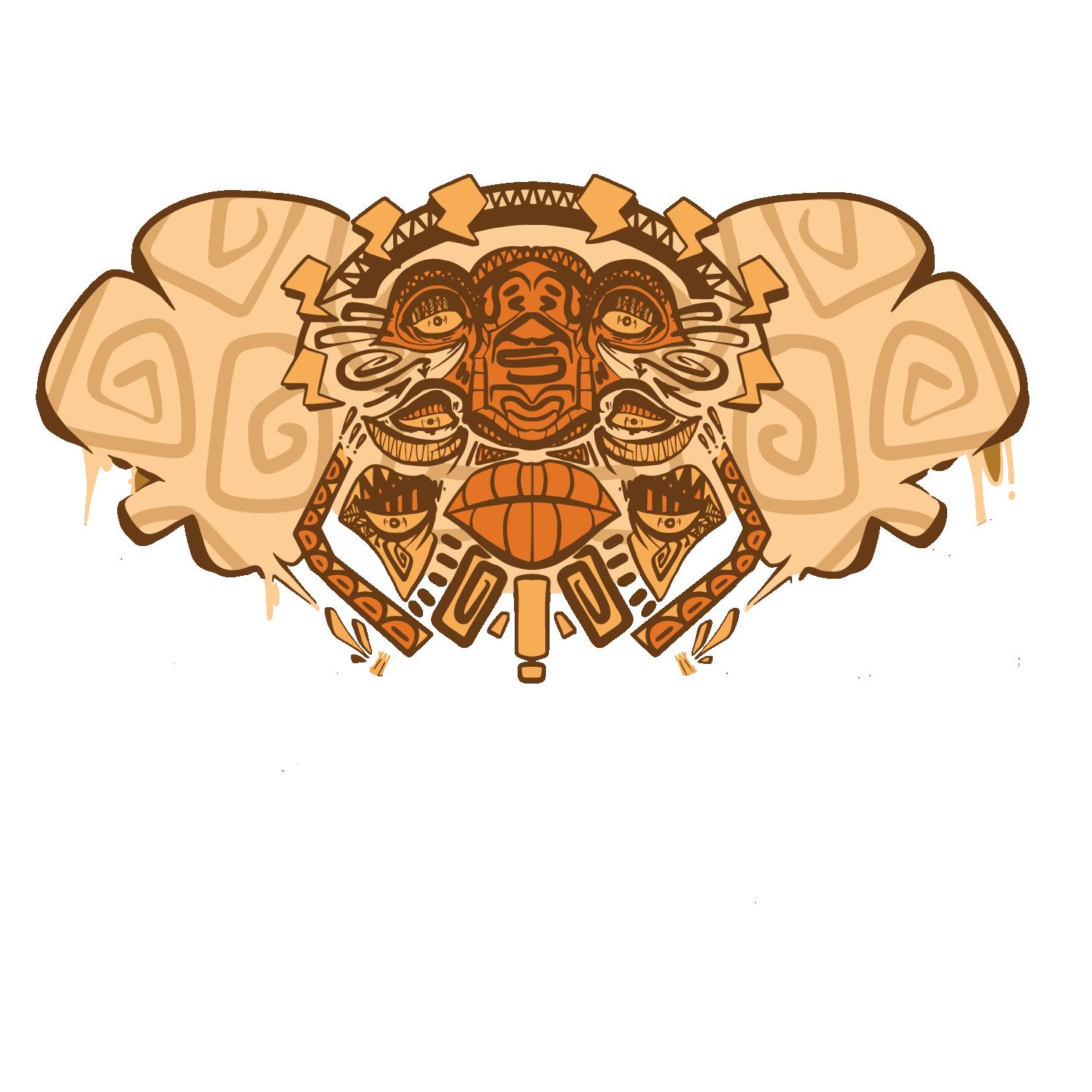











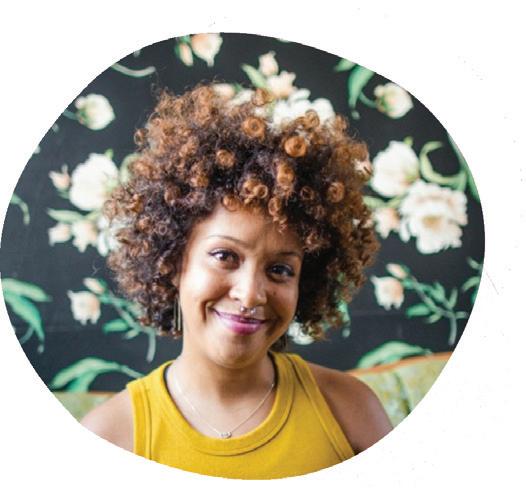
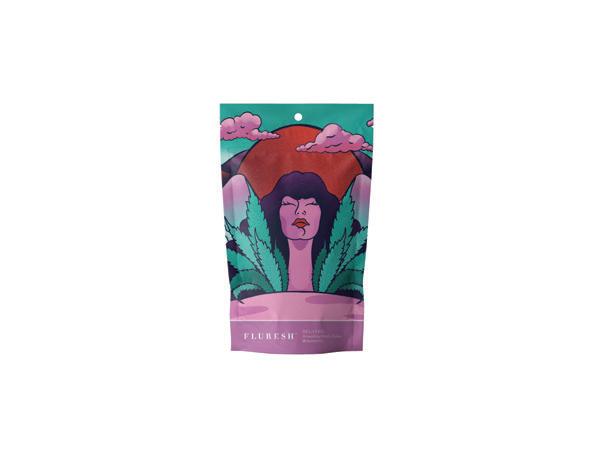


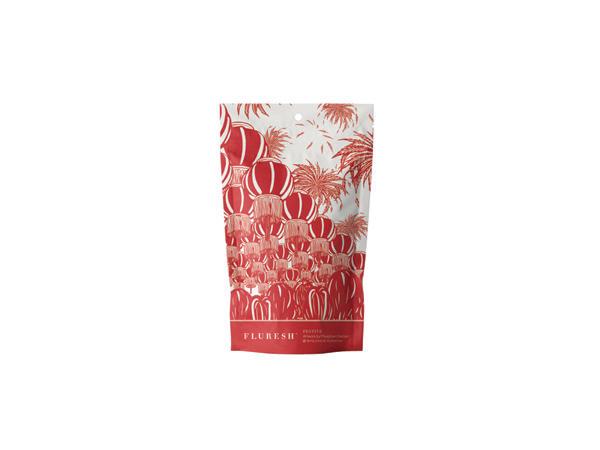



















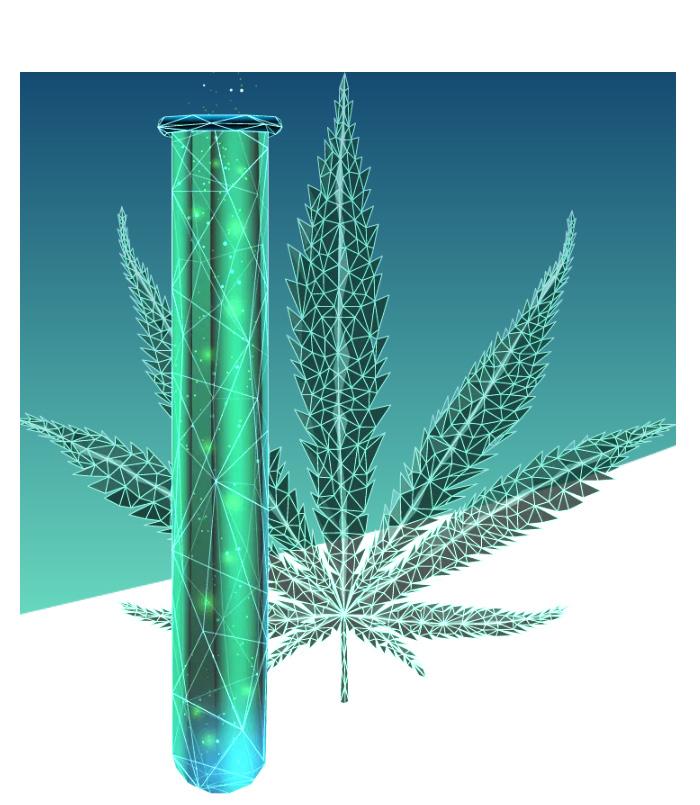
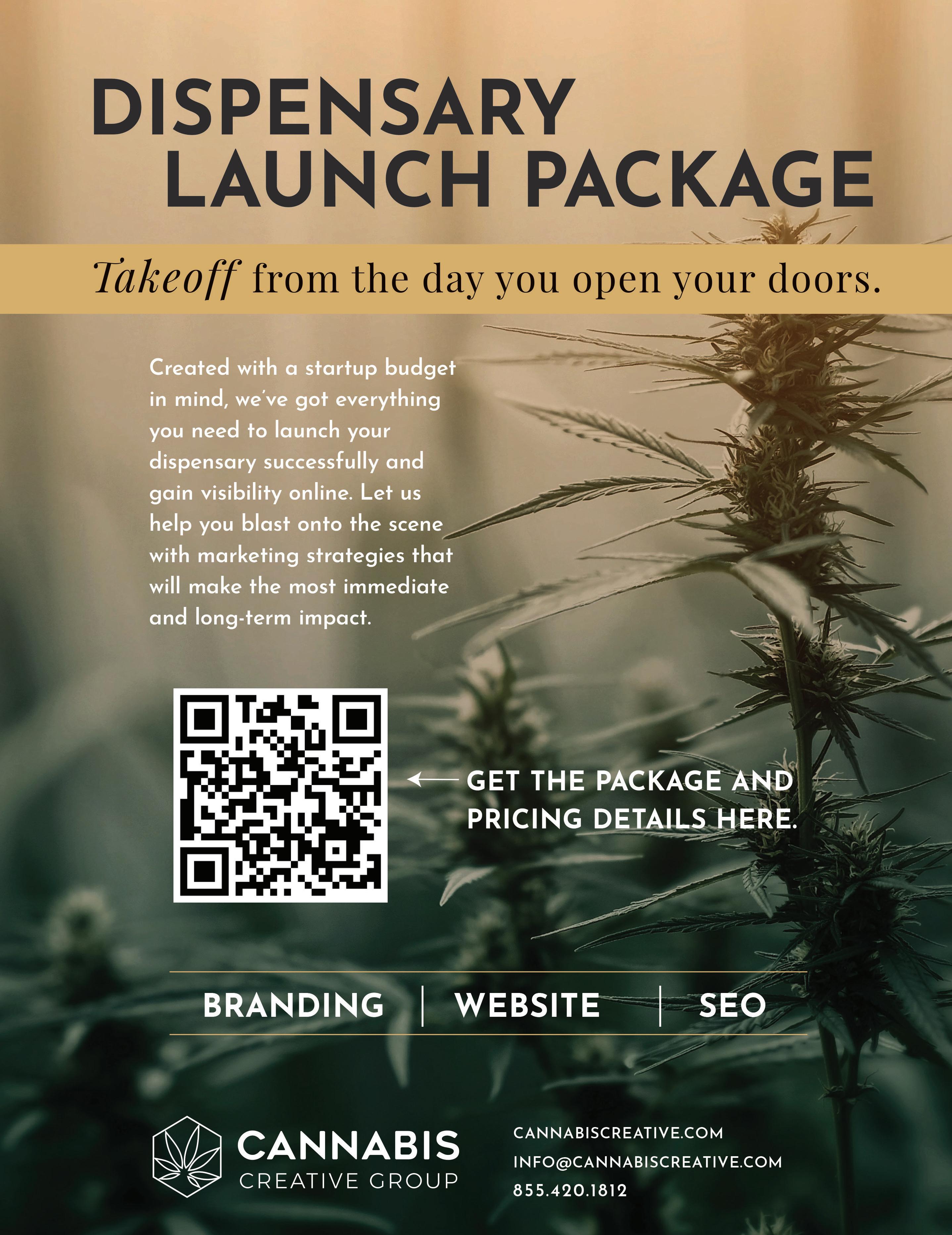

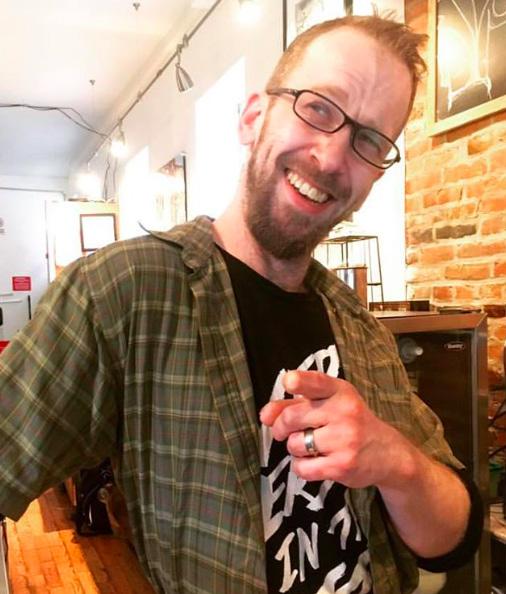
cannabutter
Nubbs” Zach Scott is a great way to introduce cannabis into your diet. The preparation takes a while, but it’s worth the journey.

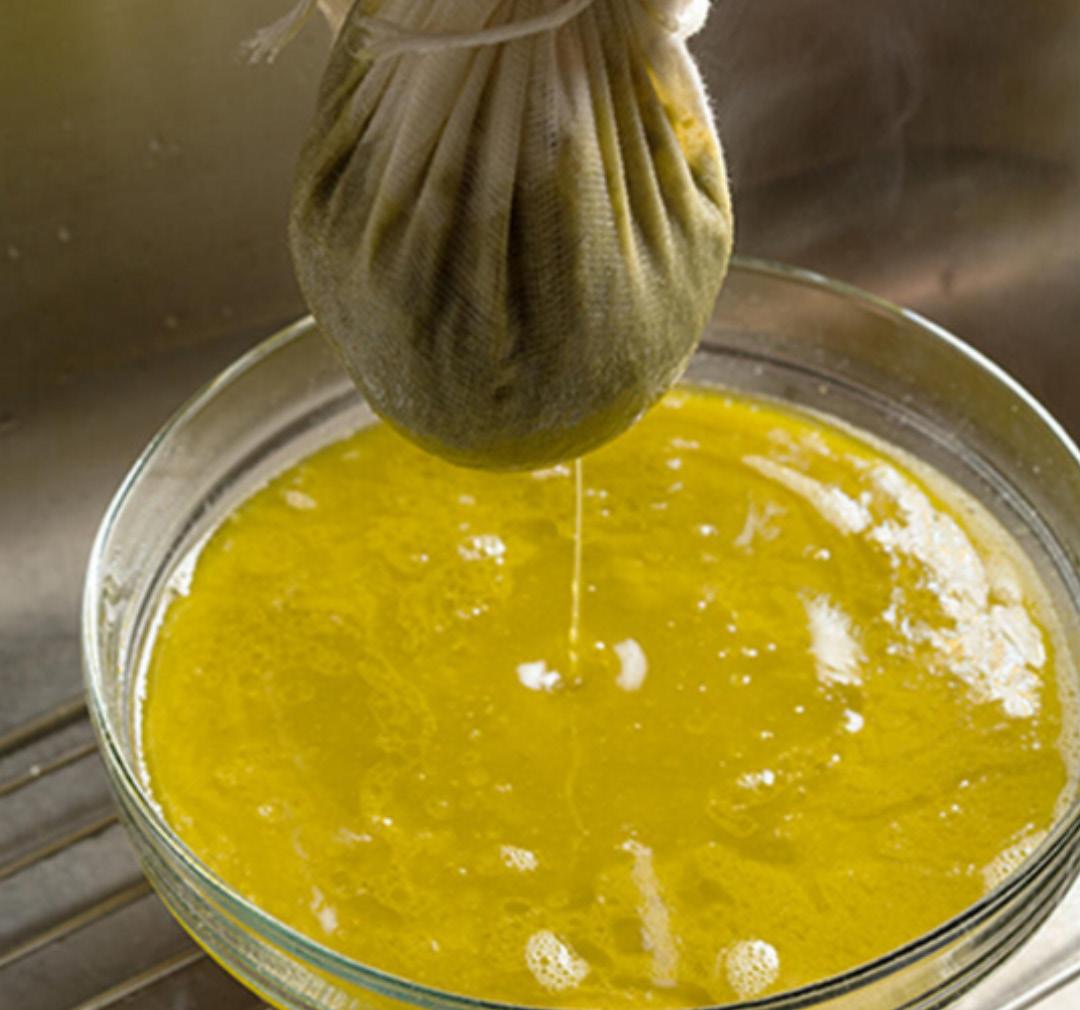
Use it as you would regular butter, but be careful with the amounts. Cannabutter is quite potent and a little goes a long way.
INGREDIENTS
8 ounces real butter (not non-dairy)
7 grams marijuana herb or 14 grams trimmings
½ cup lecithin granules
EQUIPMENT
cheesecloth (doublelayered in a 12-by-12 inch square)
fine mesh strainer
2- or 3-quart pot
5-inch tea ball or boilable nylon cooking bag
10-ounce or larger storage container (glass or plastic)
INSTRUCTIONS
• Fill the pot with two-thirds water and bring to a boil.
• Chop or grind the cannabis very finely and seal it in a boilable bag.
• Place the ball or bag in the boiling water.
• Boil for 40 minutes, then remove.
• If your weed gets wet, pour it into a fine strainer and let dry for 30 minutes. Discard water and rinse pot.
• Add about two inches of water to the pot and bring to a gentle boil (the point when tiny bubbles form on the surface).
• Add butter and let it melt.
• Add lecithin granules and dried weed.
• Maintain a gentle boil for eight to 10 hours (adding water as needed).
• Stir every 20 minutes for the first hour, then every two or three hours until finished.
STORAGE
• Line the strainer with the cheesecloth.
• Turn off the heat and carefully pour all the pot’s contents through the cheesecloth-lined strainer into the container.
• Let everything cool for a few minutes.
• When the cheesecloth is cool, pick it up by the corners to form a bag and squeeze out every drop of water and butter into the container.
• Cover the container and refrigerate overnight. The butter will solidify and separate from the water.
• Remove the butter and discard water.
• Pat dry the butter with an absorbent towel.
• The cannabinoids will remain potent for two to three weeks refrigerated, or two to three months frozen.
